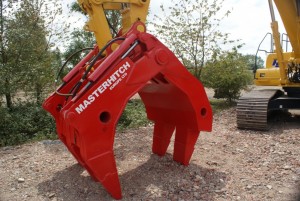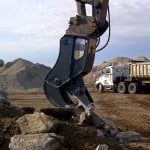Do You Need to Grease Hydraulic Breakers?
Keywords: mini excavator hammer, commercial demolition cost per square foot
When it comes to maintaining your demolition equipment and keeping it running smoothly, greasing your hydraulic breaker is your first line of defense! While it may seem like a tedious task, this preventative maintenance can save you big in the long run, both in time and money. We’re going to cover why it’s necessary, and how to properly grease your hydraulic hammer. Keep reading to learn more!
Why Is Grease Necessary?
If you’re going to do one thing for hydraulic hammer maintenance, it should be greasing. Other than the chisel hitting the rock, there is no greater wear area in the construction and demolition field than where the tool meets the bushings. Hydraulic hammer lubricant or chisel paste lubricates the tool bushings, retainers and demolition tool, dispersing heat and keeping debris from creeping into the breaker. Failing to lubricate at the correct intervals dramatically increases wear rates, causing frequent and expensive tool bushing and tool replacement. If you do nothing else for your hydraulic hammer, grease it regularly with the correct hammer grease.
What is the right grease for my hydraulic hammer?
Chassis grease will not properly lubricate a hydraulic hammer! It is designed to lubricate against wear that occurs at slow speeds, at low angles between smooth or bearing protected surfaces without any impact. A hydraulic hammer tool moves in its bushings at between 300 and 1,200 cycles per minute at very sharp angles while continually being subject to foreign matter intrusion, high heat, and severe impact and shock. If you’re not using Gorilla Goo™ chisel paste or a suitable hammer grease or hydraulic hammer lubricant designed specifically for hydraulic hammers, you are wasting your time. Chassis grease is just not designed for such a harsh application.
How and how often should I grease my Hydraulic Hammer
Every hydraulic breaker must be lubricated in a vertical position with the weight of the carrier pressing down on the tool. If it is not done this way, the chisel paste will get between the top of the demolition tool and the strike piston, causing one or the other to crack.
Always lubricate thoroughly when you are installing a new demolition tool! Often, an entire tube of chisel paste or hammer grease is necessary to coat the wear surfaces that go inside the hammer including the tool retainer slots.
CAUTION: You must keep the top cap that contacts the strike piston clear of grease to avoid compacting grease against the strike piston and causing internal damage.
Every hydraulic hammer requires hammer grease every two working hours. For hammers with a tool up to 3 inches in diameter, 10 to 15 “pumps” from a grease gun will work fine. When you get hydraulic breakers with tool diameters over 4 inches in diameter, 20 “pumps” in required. If you want to save time and ensure that your hydraulic breaker is always receiving adequate lubrication, you can install a carrier or hammer mounted automatic greaser.
However, the best way to ensure proper lubrication is a trained operator! They should always be looking where the demolition tool meets the lower bushing to ensure that there is always a steady coating of grease there. Visual monitoring is the best and last line of defense against running a demolition chisel and its bushings dry.
Ask the Experts at Gorilla Hammers
As mentioned, proper lubrication and greasing is essential for your hydraulic hammer. If you’re unsure what type of hammer grease to use or how to apply it, our hydraulic hammer specialists at Gorilla Hammers will be happy to answer your questions and get you started with our own Gorilla Goo™ chisel paste.


